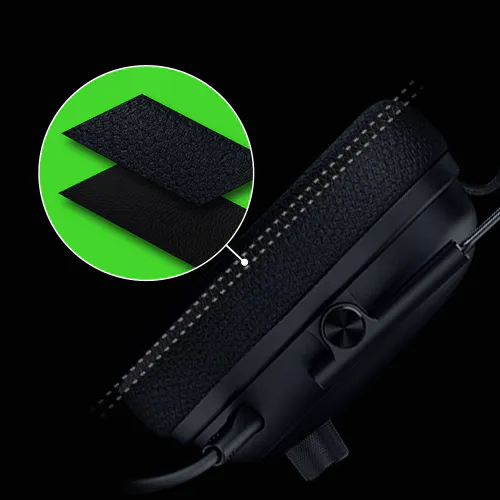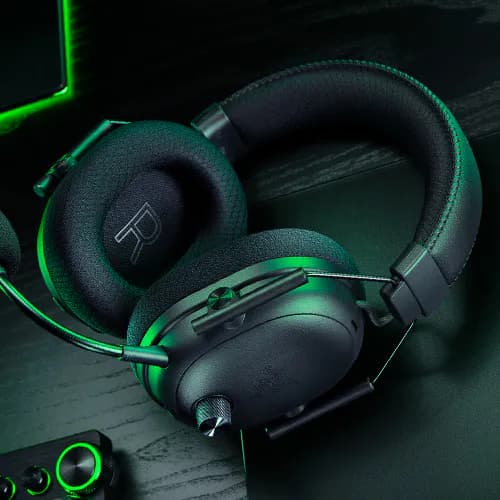
As someone who spends far too many late nights at the desk obsessing over footsteps in Valorant or chasing that perfect headshot echo in Apex Legends, I don’t just want a decent headset-I crave a tool that becomes an extension of me. The original Razer BlackShark V2 Pro practically lived on my head for two years. So when the V3 Pro landed on my doorstep, flaunting bio-cellulose drivers, active noise cancellation, and a glaring $249 price tag, my eyebrows nearly launched off my face. Could this possibly justify the upgrade over an old favorite, or had Razer lost sight of what made the BlackShark series legendary for competitive gamers like me?
I went in skeptical, honestly. I’ve been burned before by “PRO” hardware that churns out features nobody asked for while quietly raising the price. So I cranked up my usual gauntlet: 40+ hours of mixed play across FPS shooters and some late-night YouTube music dives, toggling ANC back and forth and tweaking every Synapse preset I could find. What I found was a headset that doesn’t just chase trends-it feels laser-focused on what actual players need, with a handful of caveats that surprised me along the way.
The unboxing ritual itself gave me mild déjà vu-matte black, stitched headband, big plush ear cushions—only this time the cups actually swivel. I have a big head (size 8 baseball caps, it’s a curse), but the V3 Pro swallowed my skull with a reassuring clamp that I got used to surprisingly fast. Five-hour sessions with Counter-Strike 2 felt breezy. I did notice after my fifth straight match, though, that ANC gave me a faint, almost submarine-like head pressure—not enough to kill a session, but enough that if I were using these on a plane, I might want to toggle ANC off every few hours.
Razer finally solved a small but frustrating gripe: the power button on the V2 Pro always felt identical to other buttons in the dark. Now it’s cross-hatched, and the volume wheel has delightful little detents. These are the kind of upgrades you instantly miss when you return to lesser designs. I lost count of how many midnight Discord raids I spent blindly groping, so thank you, Razer.
This was the feature I didn’t know I needed, and getting it working was a eureka moment. Plug the 2.4GHz dongle into my PC, then link Bluetooth to my phone—now I could monitor Steam chat and catch a call or podcast without missing a beat.
In theory, you can make the headset lower game audio when a call comes in or mute it entirely. The Synapse software’s settings for managing these sources are a little buried (why is the toggle under “Device Settings” and not “Audio Mix”?!), but once set up, it’s honestly game-changing.
On Day 2 I actually joined a Discord call from my phone, coordinated with friends, and then jumped into a match on my PC while streaming music at low volume—all from the headset. It felt like piloting a spaceship, but the flying was smooth.
I expected decent sound, but the V3 Pro’s new TriForce bio-cellulose drivers are a legit step up. Yes, it’s a marketing mouthful, but the real test is when you crank up EQ for game audio. I loaded up Apex Legends, switched to the Razer-made Apex EQ profile, and legit started picking up footsteps in zones I’d missed before. In Valorant, enemy reloads and rope climbs popped out of the mix without ear fatigue—even at obnoxiously high volumes, mids stayed crisp instead of turning to soup.
Music was one of the best surprises. With a +3dB on the lowest two EQ bands (31Hz/63Hz), the sub-bass on “Lose Control” by Missy Elliot had me grinning. I ran some classic rock (Fleetwood Mac, as always): midrange is full but not too thick, high end shimmers without sibilance. For acoustic tracks, the clarity felt as good as my old Sennheiser PC37X, but with a little extra weight in the low end for gaming.

The big win: massive customization. I’ve never found a headset that lets me dial in lows and highs so precisely without the mix falling apart. I ended up saving separate profiles for FPS, open world, and music. Swapping between them via the earcup profile button is seamless (though pro tip: label them, or you’ll lose track after your fifth custom EQ).
After my first few hours, I wondered if ANC would really matter for a headset that rarely leaves my desk. Yet it actually came in clutch more often than I expected. The low hum from my PC fans and the endless summer construction outside my window got dialed way down. It’s not as isolating as my travel Bose cans (not even close), but here’s the important bit: it doesn’t crush the soundstage.
With ANC active, the headset loses just a smidge of bass, but it’s subtle, and there’s no weird midrange dip like I’ve heard on cheaper gaming headsets. If you’ve got a noisy roommate, kids, or just need to drown out the world, it’s totally worth flicking on, though you might get that aforementioned ear “pressure” after a couple of hours. I toggled to ambient mode during Discord calls to avoid missing doorbells—again, nice attention to living-in-the-real-world detail.
I always used a standalone USB mic for serious streams, but the BlackShark V3 Pro’s new “full band” detachable mic is the best I’ve heard on a gaming headset. Friends noticed a boost in clarity and way less “boxiness” versus the old V2 Pro immediately—especially when yelling callouts in Apex.

Recordings from Audacity showed the V3 Pro gives you solid presence without megaphone vibes, though deeper voices aren’t quite as rich as what you’d get from a real XLR setup. That said, for everyday Discord, Zoom, or even the odd podcast, you’ll sound completely pro to most folks.
I was legit worried about the extra weight (367g on my kitchen scale), but the plush memory foam does most of the heavy lifting. After 20 hours across four days, no pinching anywhere—even around my glasses. The new swiveling cups are a win for all head shapes, finally matching competitors like SteelSeries and Logitech in ergonomic flexibility.
Battery? It mostly sticks to the “70 hours on PC” claim. In real-world conditions—I left ANC on, fiddled constantly with dual wireless, and did some passive music listening—I always got 2-3 days of use before needing to plug in via USB-C. (Sony and Corsair can still last longer, but not by much anymore.) I do wish Razer would let us hot-swap batteries, considering there’s a battery compartment, but it’s officially “not user-accessible.” Small gripe, big sigh.
Let’s not mess around: $249 is a lot for a headset that rarely leaves the house. If you’re hunting for something lean and travel-friendly, or if you want a headset that works just as well on your commute or Switch, this isn’t the best all-rounder. The ANC here is more extra sauce than a main ingredient; great for office noise, but not close to audiophile ANC standards. And that slight pressure after long ANC sessions? Still puzzled by it, but it crops up every time I use ANC for three hours or longer.
If you’re a competitive gamer, play lots of team-based shooters, and want a headset you can dial in exactly to your ears and your desk setup, this is your new best friend. The mic’s finally good enough to ditch the old USB condenser, and the ability to mix Bluetooth and game audio is low-key revolutionary for streamers, remote workers, multitaskers.

If you need a headset for traveling, prefer ultra-lightweight, or plan to drop $250 only to use the analog jack half the time… I’d look at more versatile options. Razer’s own V3 or the Hyperspeed X give you 70% of the experience at a much lower price.
The BlackShark V3 Pro nails the “serious at-home competitive headset” more than any wireless can I’ve used in years. The combo of comfy fit, customizable EQ, and reliable, low-latency wireless is honestly unmatched right now. Sound quality is there for music nerds, battery life is strong, and the practical upgrades over the V2 Pro are easy to feel—not just fluff on a spec sheet.
I still wish Razer didn’t chase the $250 tier so aggressively. For that price, I crave replaceable batteries, top-tier ANC, and maybe a travel case. But if you’re like me—a competitive shooter fiend who wants “set and forget” reliability—this is where your money goes until the next headset revolution.
Pros: Comfort king, killer EQ, strong mic, dual wireless is genuinely useful, ANC effective enough for daily distractions.
Cons: Pricey, ANC isn’t on par with travel headphones, gets slightly fatiguing after marathon use.
Final Score: 9/10 — Near-perfect competitive headset, just not for your next flight.
Get access to exclusive strategies, hidden tips, and pro-level insights that we don't share publicly.
Ultimate Reviews Strategy Guide + Weekly Pro Tips